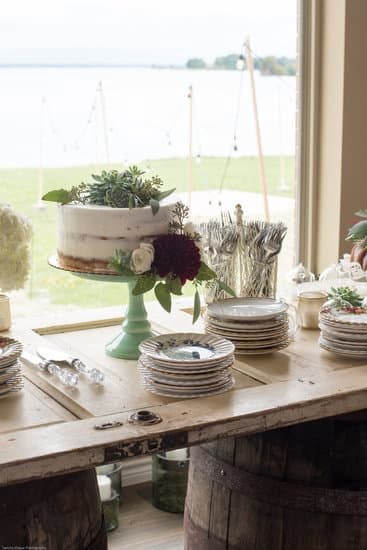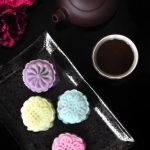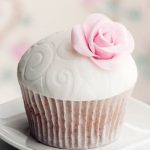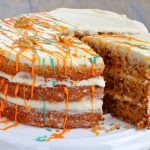Have you ever wondered how to stick fondant decorations to a cake? Fondant is a versatile and popular option for cake decorating, allowing for intricate designs and creative possibilities. In this article, we will explore the magic of fondant decorations, from their origins to different types and designs, as well as tips for prepping the cake surface and adhering the decorations effectively.
Fondant has been a beloved choice for cake decorators for centuries. Its history dates back to ancient times, and it has since become a staple in the world of confectionery. We will delve into its intriguing origin story and how it has evolved into a go-to option for creating stunning cake designs.
From simple shapes to elaborate designs, fondant decorations come in various forms to suit any theme or occasion. Whether it’s flowers, figurines, or abstract patterns, there is no limit to the creativity that can be achieved with fondant. We will explore the different types of fondant decorations and how they can elevate the look of any cake.
Brief History of Fondant
Fondant is a type of icing that has been used for centuries to decorate cakes and pastries. Its origins can be traced back to ancient Egypt and the Middle East, where it was initially made from honey, sugar, and water. Over time, the recipe evolved to include ingredients like glucose syrup and glycerin, giving fondant its smooth and pliable texture.
In the 16th century, fondant gained popularity in France as a luxurious confectionery product used to coat fruits and create decorative displays. It wasn’t until the 19th century that fondant became a popular cake decorating option, especially in Western countries. This shift was largely due to advancements in sugar processing technology, which made fondant more accessible to bakers and pastry chefs.
By the mid-20th century, commercial production of fondant skyrocketed, making it a staple in the world of cake decorating. Today, fondant is available in a variety of colors and flavors, allowing for endless creativity when it comes to designing cakes for special occasions.
Evolution of Fondant as a Cake Decorating Option
As fondant continued to gain popularity as a cake decorating option throughout the years, bakers and pastry chefs began experimenting with different techniques for creating elaborate designs and decorations using this versatile icing. From classic wedding cakes adorned with intricate fondant flowers to whimsical children’s birthday cakes featuring sculpted fondant characters, the possibilities are endless when it comes to using fondant to elevate the look of a cake.
Fondant Today: A Staple in Cake Decorating
In modern times, fondant has become an essential tool for professional bakers and home decorators alike. Its smooth texture allows for seamless application on cake surfaces, providing a perfect canvas for intricate designs and custom creations.
As such, it’s no wonder that fondant has become synonymous with elegant and elaborate cake decorating. With its ability to be shaped into any design or form imaginable, it’s easy to see why fondant remains a go-to choice for adding decorative flair to all kinds of confections.
Whether you’re looking to create a show-stopping wedding cake or simply want to add some pizzazz to your next batch of cupcakes, working with fondant opens up a world of creative possibilities that can take your baked goods from ordinary to extraordinary.
Types of Fondant Decorations
Fondant decorations come in many different shapes, sizes, and designs, making them a versatile option for cake decorators. Whether you’re looking to create intricate flowers, sleek geometric shapes, or whimsical figurines, fondant can be molded and shaped to bring your vision to life. In this section, we’ll explore the various types of fondant decorations and how they can be used to elevate the look of any cake.
Shapes
One of the most appealing aspects of fondant decorations is the ability to create virtually any shape imaginable. From simple circles and squares to elaborate 3D designs, fondant can be molded and sculpted to suit the theme and style of your cake. Common shapes include stars, hearts, animals, letters/numbers, and seasonal motifs like snowflakes or pumpkins.
Sizes
Fondant decorations also come in varying sizes, allowing for both bold statement pieces and delicate accents. Larger fondant designs can serve as focal points on a cake, while smaller details add texture and visual interest. By playing with scale, decorators can create depth and dimension on their cakes.
Designs
The design possibilities with fondant are endless. Some popular fondant decoration designs include lace patterns for elegant wedding cakes, abstract shapes for modern aesthetics, or themed figures for birthday or holiday celebrations. With the right tools and techniques, decorators can achieve smooth finishes, intricate detailing, and stunning textures with fondant decorations.
When it comes to sticking fondant decorations to a cake, there are a few methods that ensure they stay put. Whether you’re using edible glue, water or royal icing as an adhesive, it’s important to prep the surface of the cake properly before applying fondant decorations. The type of cake (e.g.
moist vs dry), temperature conditions (i.e. humidity), and size/weight of the decorations will also impact how well they adhere to the surface. By understanding these factors and following best practices for adhering fondant decorations to cakes, you can achieve professional-looking results that will impress your clients or guests at any event.
Prepping the Cake
When it comes to decorating a cake with fondant, prepping the surface is essential to ensure that the decorations adhere properly and look flawless. Here are some key tips for prepping your cake before applying fondant decorations:
- Smooth Foundation: It is crucial to start with a smooth and even foundation for your fondant decorations. Make sure that the cake is baked and cooled completely before you begin decorating. If the surface of the cake is uneven, consider using a layer of frosting or buttercream to create a smooth base for the fondant.
- Clean Surface: Before applying fondant decorations, make sure that the surface of the cake is free from any crumbs or excess frosting. A clean surface will allow the fondant to adhere more securely and prevent any lumps or bumps from forming under the decorations.
- Use Cornstarch or Powdered Sugar: Lightly dusting your work surface with cornstarch or powdered sugar can prevent the fondant from sticking and make it easier to roll out. Be sure to use just enough to prevent sticking, but not so much that it affects the taste or texture of the fondant.
Following these prepping tips will help ensure that your cake is ready for fondant decorations and provide a solid base for creating beautiful designs on top.
Now that you’ve prepped your cake, you may be wondering how do you stick fondant decorations to a cake. The next step in our guide will walk you through the process of adhering fondant decorations securely to your beautifully prepped cake surface.
Adhering Fondant Decorations to the Cake
Fondant decorations are a fantastic way to add flair and personality to any cake. But how do you stick fondant decorations to a cake? The key is to ensure that you have a suitable surface for the fondant to adhere to and use the right technique to make them stay put.
First, it’s important to prepare the surface of the cake before applying fondant decorations. Make sure the icing on the cake is smooth and free of any crumbs or imperfections. This will provide a clean canvas for the fondant decorations and help them adhere better.
Next, consider using edible glue or royal icing to attach the fondant decorations to the cake. These options are great for securing intricate or delicate pieces in place. Simply apply a small amount of edible glue or royal icing to the back of the fondant decoration, then gently press it onto the desired spot on the cake.
Another effective method for adhering fondant decorations is by using water. Lightly brush the back of the decoration with water, then carefully place it onto the cake. The moisture from the water will create a secure bond between the fondant and the surface of the cake.
When applying larger fondant decorations, like bows or flowers, consider using toothpicks or skewers as additional support. Insert them into the back of the decoration before placing it on the cake for added stability. Just be sure to inform your guests about these hidden supports before they start eating.
Overall, there are several methods for sticking fondant decorations to a cake, depending on their size and intricacy. By prepping your cake properly and employing these techniques, you can ensure that your fondant creations stay put and make a stunning visual impact on any celebratory dessert.
| Tips | Steps |
|---|---|
| Prepare smooth surface | Apply edible glue or royal icing |
| Use water as adhesive | Consider using toothpicks for large decorations |
Troubleshooting
When working with fondant decorations, it’s important to be aware of common issues that may arise and how to fix them to ensure your cake looks flawless. Here are some troubleshooting tips for sticking fondant to a cake:
1. Cracking: If you notice that your fondant decorations are cracking or breaking when you try to adhere them to the cake, it could be due to the fondant drying out too much. To fix this issue, try kneading the fondant again to soften it or lightly brush the back of the decoration with water before sticking it to the cake.
2. Slipping: Sometimes, fondant decorations may slip or slide off the cake if they are not properly adhered. To prevent this, make sure to lightly moisten the surface of the cake where you will be placing the decoration. This will provide some tackiness and help the fondant stick better.
3. Air bubbles: Air bubbles can form underneath fondant decorations, causing an unsightly bulge on your cake. To avoid this, carefully smooth out the surface of the cake before applying the decoration, and use a small pin or needle to prick any air bubbles and release the trapped air.
By being mindful of these common issues and following these troubleshooting tips, you can ensure that your fondant decorations stick securely to your cake, allowing you to create a stunning and professional-looking design.
Creative Tips
Fondant decorations are not only beautiful, but they also offer a wide range of creative possibilities to elevate the look of your cake. Whether you’re a professional baker or a home enthusiast, there are countless ways to use fondant decorations to make your cakes stand out. From simple designs to intricate details, fondant allows you to bring your cake decorating ideas to life in stunning ways.
One unique way to use fondant decorations is by creating 3D elements that add depth and dimension to your cake. This could include sculpting flowers, animals, or even miniature figures that sit on top of the cake. These 3D fondant decorations can turn an ordinary cake into a show-stopping centerpiece for any special occasion.
Another creative tip for using fondant decorations is experimenting with different textures and finishes. By mixing and matching matte and glossy fondant pieces, or incorporating edible luster dust or metallic paints, you can add visual interest and sophistication to your cake designs. Additionally, combining fondant with other edible materials like wafer paper or gum paste can result in unique and eye-catching decorations that truly set your cakes apart.
It’s also worth exploring the possibilities of using fondant decorations beyond just adorning the surface of the cake. For example, creating delicate ruffles or pleats with fondant can add elegance and movement to the overall design. In addition, incorporating fondant cut-outs or lace designs around the base of the cake can create a polished and cohesive look from top to bottom.
| Creative Tips | Unique Ways |
|---|---|
| 3D elements for depth and dimension | Sculpting flowers, animals, or figures |
| Textures and finishes | Mixing matte and glossy fondant pieces |
| Exploring beyond surface adornment | Ruffles, pleats, cut-outs around base |
Conclusion
Fondant decorations have been adding a touch of magic to cakes for centuries and continue to be a popular choice for creating stunning designs. From simple shapes to intricate details, fondant allows for endless creativity that can transform any cake into a work of art. Understanding the history and versatility of fondant, as well as how to properly adhere it to a cake, can make all the difference in achieving professional-looking results.
When it comes to sticking fondant decorations to a cake, there are several methods that can ensure they stay in place. Whether using edible glue, water, or royal icing, the key is to apply a thin layer on the back of the decoration and gently press it onto the cake. It’s important to take into consideration the weight and size of the decoration, as well as the texture of the surface where it will be placed.
In conclusion, fondant decorations offer an incredible opportunity to elevate the look of any cake and unleash your creativity. By understanding their history, types, proper application methods, troubleshooting potential issues, and utilizing creative tips, you can achieve breathtaking results that will impress any audience. So go ahead and experiment with different shapes, sizes, and designs to see just how you can transform your cakes into masterpieces with fondant decorations.

Welcome to our cake decorating blog! My name is Destiny Flores, and I am the proud owner of a cake decorating business named Cake Karma. Our mission is to provide delicious, beautiful cakes for all occasions. We specialize in creating custom cakes that are tailored specifically to each customer’s individual needs and tastes.





